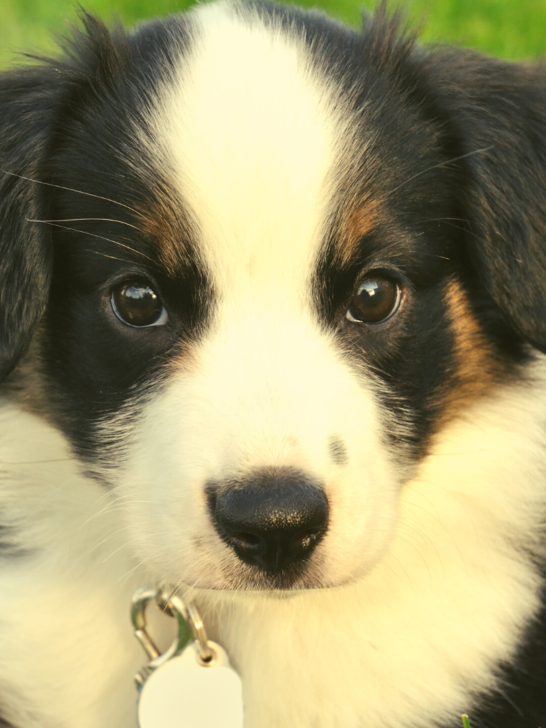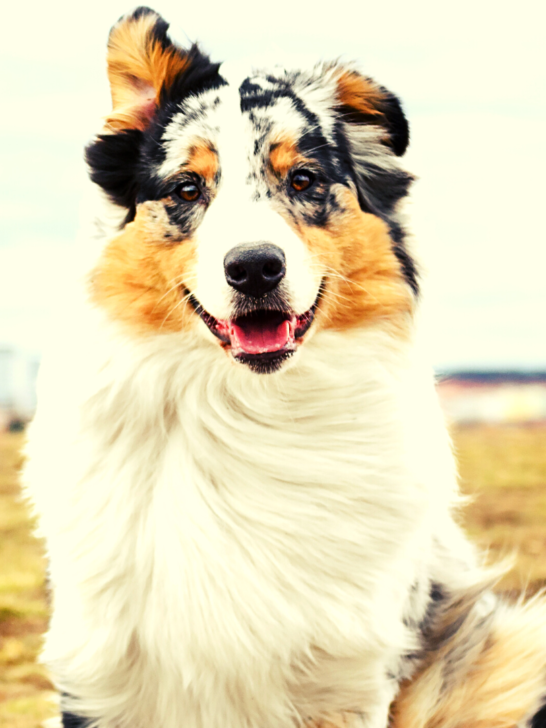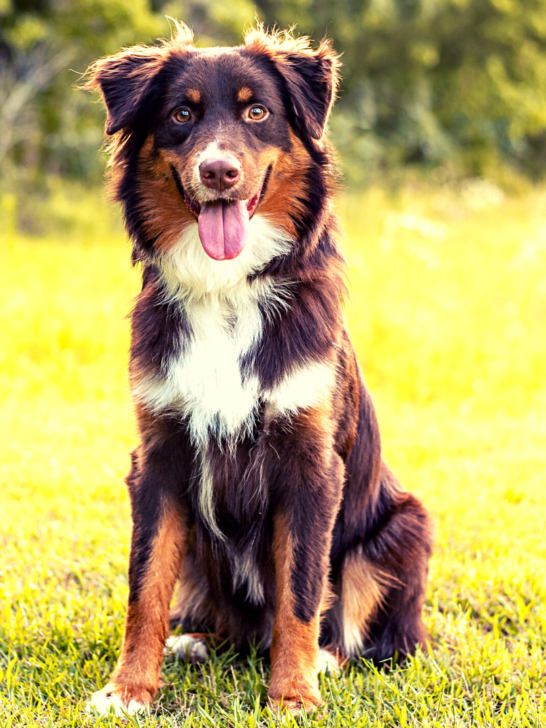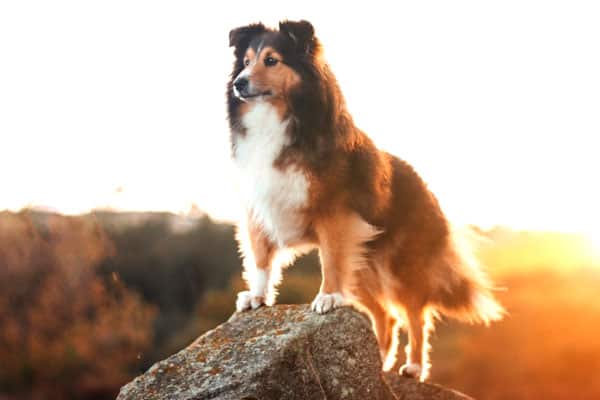Australian Shepherd Blue Heeler Mix: A Tireless Worker & Loyal Companion
Australian Shepherds and Blue Heelers are both beautiful and hardworking dogs, when combined they create some hardcore cute designer puppies.
This mix is most commonly known as the Australian Heeler, however some will also refer to them as the Texas Heeler, or the Queensland Heeler Australian Shepherd mix.
Whatever you want to call them, they are very energetic dogs, and they are also very work oriented.
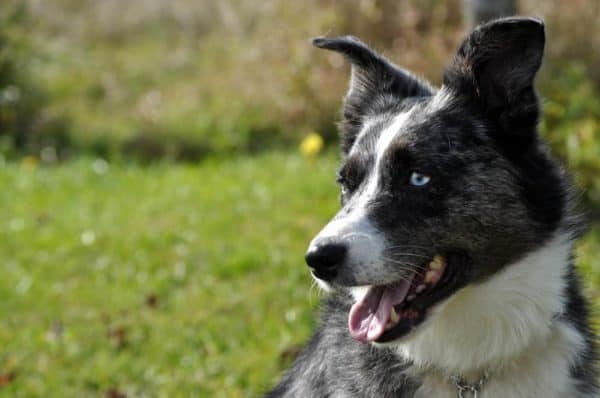
Ideally, these dogs will fare best with a family who will work them on a ranch, or perhaps a very active family who will exercise them for an hour to an hour and a half per day without fail.
These dogs need a lot of exercise, as working hard and having lots of energy is what they were made for.
While exercise is very important for these pups, it is not the only thing that you need to consider, as there is plenty to learn about these dogs.
So, let’s get cracking and find out more about these dogs, so that you can accurately decide if this dog is the perfect dog for you.
Breed Histories
One of the best ways you can get to know about a dog is to understand its parents, especially with hybrid and crossbred breeds.
You want to know what each purebred and hybrid parent dog will bring to the mix that creates your dog.
For this, we will look into both the Australian Shepherd dog and the Blue Heeler. Let’s start off learning about the history of these dogs, where they come from and who they are at their very core.
Australian Shepherds
Australian Shepherd dogs have a unique and colorful history, these are also highly popular dogs to have in the US, in fact, they are actually rated as being the 17th most popular dog at the AKC out of 196.
However, unlike you might expect, Australian Shepherds didn’t start off in the United States, and nor did they start their lives in Australia either.
This is a breed that is believed to have originated back in Europe in the Pyrenean mountains.
These are smart, energetic and have a talent for working, and they always have been this way.
As they evolved and integrated with humans, they became popular dogs for herding and ranching on farms, they also became a good dog for circus tricks and roadshows, and they are even excellent for service and therapy.
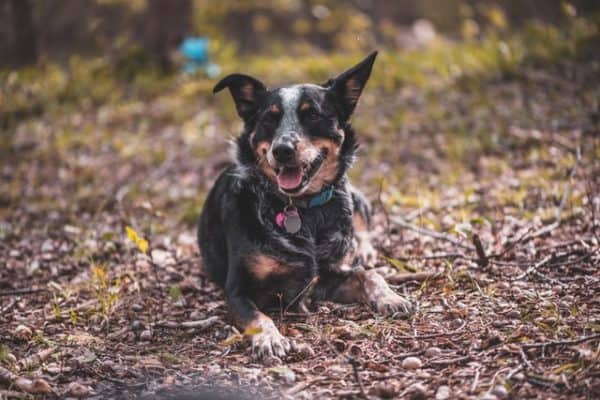
Blue Heeler
Blue Heelers, otherwise referred to as Australian Cattle Dog’s, are a breed of herding dog that was originally developed in Australian for driving cattle over long distances and across rough terrains.
These breeds have a coat that is either black or brown and is even distributed over their white coat, which can make them look either red or blue.
The dog first came into being in the 19th Century when a New South Wales cattle farmer cross-bred the dogs used in Northumberland with dingoes that he had tamed.
The result was ‘Halls Heelers’ named after the farmer Thomas Hall himself.
After he died, these dogs became available beyond his family, and they were eventually made into what we now know today was Blue Heelers.
Whether a heeler is red or blue depends on their coat, and this breed is now much more widespread.
Australian Shepherd Blue Heeler Mix
Blue Heeler mix dogs were originally introduced in the United States in the 20th Century and were finally recognized by the AFC in the 198’s.
During the late 1980s, Texas Ranchers started mixing Australian Shepherd and Blue Heelers to create the Australian Shepherd Blue Heeler mix.
They found this useful as this is considered to be an all-purpose working dog and they would be able to tend to all kinds of livestock.
Personality Traits
There are so many types of dog in our world now, pure-bred, hybrid and otherwise. It is a fantastic thing, as this means every dog will have a unique personality and temperament, there is literally a dog fit for everyone.
It can be easier for you to find the dog whose personality suits you better.
Let’s take a look at these dogs and see if their personality will be a good fit for you.
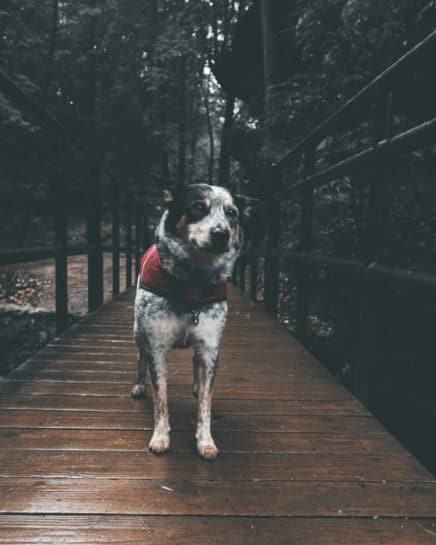
Australian Shepherd
Australian Shepherds are very intelligent with high energy levels, and a natural resilience that makes them an ideal choice for all kinds of working dog roles.
However, it is very possible that Australian Shepherds may have some issues with aggression genetically.
In fact, it has actually got to a point where the Australian Shepherd Club of America has issued specific guidelines about how owners should handle aggression from these dogs during dog shows and competitions.
It is also very important that you should meet an Australian Shepherd Puppy’s parents so that you can check for any potential signs of aggression.
Non-aggressive Australian Shepherd puppies should be playful and loyal.
Blue Heeler
Blue heelers are naturally fantastic herders, if you want a dog for herding then this is the dog for you.
They have athletic stamina, and you can work them as long as you need. Their only payment is belly scratches and a tasty treat.
Do be aware that these dogs might try to herd strangers, or children, if this happens you need to put an end to it fast.
These dogs are loyal and very loving, he will be your best buddy, and you’ll be engulfed in doggy kisses. These dogs are also snugly and will happily join you on the couch after a long day.
These are also good guard dogs, if they suspect you or your family are in danger, they will gladly step in the way and ward off harm.
So, not only are they great for herding and snuggling, but they are great guard dogs too.
Australian Shepherd Blue Heeler Mix
This dog is a work dog, as both breeds that result in this mix are working dogs.
They are used to long and busy days out on farms and ranches, if domesticated they need an outlet for their energy and herding instincts, without one they may get destructive or aggressive.
They will want to spend most of their time outside too, if you do not live on a farm or ranch you need to ensure that you have an enrichment area for your dog.
If they are working, they may seem distant, but this is only because they are so in the zone.
These dogs will also bark quite a bit too as they will be on alert for any potential threats or predators.
They will take a lot of training to distinguish who is a friend and who is not, and they are best for homes without children.
They are not supper cuddly, but they show love by helping out around the house, and you can rest assured they will also be guarding your home too.
Physique
The physique between these two dogs is not too different, as they are very alike anyway and typically used for the same purposes. Let’s look at how they differ and compare.
Australian Shepherd
- Weight- 40lbs to 60lbs.
- Height- 18” to 23” tall at the shoulder.
Blue Heeler
- Weight- 30lbs to 50lbs
- Height- 17” to 20” tall at the shoulder.
Australian Shepherd Blue Heeler Mix
Weight
- Males: 30lbs to 50lbs.
- Females: 25lbs to 40lbs.
Height
- Males: 18” to 20” tall.
- Females: 17” to 19” tall.
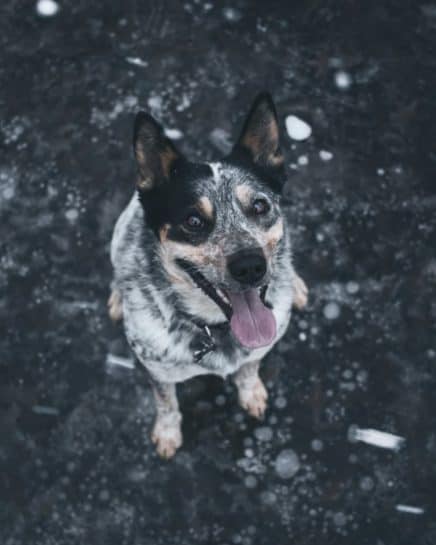
Training and Workouts
These are very active dogs, they will need an average of around 90 miles a day of exercise.
They enjoy running more than walking, so it doesn’t go amiss to choose to go on a run or jog instead of taking them on a walk.
These dogs also love hiking, so if you enjoy hiking this dog will suit you well, as they love it too. What a perfect pair you are!
Walking should be done on a leash unless you are close to home, Australian Shepherd Blue Heeler Mixes are known to shoot off on their own, and it can be a real challenge to get them back, keeping up with them is a challenge in itself.
When it comes to toys, this dog will rather test their endurance, running and jumping. So throw out the typical toys and games and give them some endurance work, they will love it.
These dogs will also need training to weed out any barking or herding tendencies, you don’t want them trying to herd you and your family.
You need to be stubborn, as this pooch will test your boundaries, training cannot be over until you say it is over.
Try not to vent your frustration if a session doesn’t go well either, your dog will pick up on it, so stay positive no matter what and your dog will notice.
Also conduct training yourself, as your dog may feel too anxious around strangers, as this is typical in this breed.
Coat Care
Coat care is important with any animal that lives with fur on their back, taking care of it can prevent complications in many dogs. So, what do you need to consider with these breeds.
Australian Shepherd
Australian Shepherd dogs have a working dog coat, they will shed seasonally year round. You will have to sweep and vacuum it up all year long. So, they probably aren’t the best for people with dog hair allergies.
Blue Heeler
These dogs have weather resistant outer coats that are short and straight, and then a dense undercoat. They will blow off their coat one or two times a year like a fluffy snowstorm.
They do not require any primping, but some grooming is necessary to keep them clean and healthy.
Be sure to brush them once a week to remove any oils and dirt and any dead hair. If they smell or are filthy, it’s bath time!
Australian Shepherd Blue Heeler Mix
These dogs have coats that do not shed too badly, they only need brushing once a week too.
As they are outdoor dogs, you should make sure their ears are checked for buildups of dirt, and their nails should be checked every few weeks to ensure they do not get too long.
You can use nail clippers, but if you do introduce them as a puppy, they’re not afraid of them.
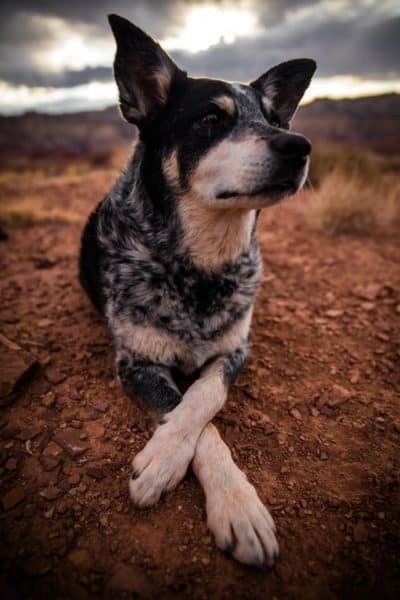
Life Span and Health
It is important to understand what the health is like for your dog, understanding what they are susceptible to can help you to prevent issues in the future.
Australian Shepherd
There are a few possible health issues you may find in an Australian Shepherd dog.
- Hip dysplasia.
- Elbow dysplasia.
These dogs are expected to have a life span of 12 to 15 years.
Blue Heeler
Blue Heelers do not have many issues, although they are likely to have a few health problems, not that different to similar dogs.
- PRA- A family of eye diseases that involve the gradual deterioration of the retina.
- Hip Dysplasia.
- Deafness- This is usually inherited.
These dogs have a typical lifespan of 12 to 15 years.
Australian Shepherd Blue Heeler Mix
These dogs are typically very healthy, although they do seem to have inherited a few conditions from the Blue Heeler side of their genetics.
- Distichiasis- An eye condition where extra hairs grow inside the dog’s eyelids. This causes irritation and even ulcers on the cornea.
- Deafness.
Australian Shepherd Blue Heeler Mixes will typically live between 13 and 16 years.
Should I get one?
These dogs are a farmer’s best friend, they are ideal for herding and having out in the fields with you all day. They require a lot of space and exercise as well.
They would make a good fitness partner for those who are hardcore into fitness, as your dog will join you on all your runs quite happily.
Furthermore, they are a great friend and an enthusiastic dog, just make sure you can keep up with them. If you give them a good home, they will love you with every ounce of themselves.
Australian Shepherd Blue Heeler Mixes are a fantastic breed with a lot to offer.


























